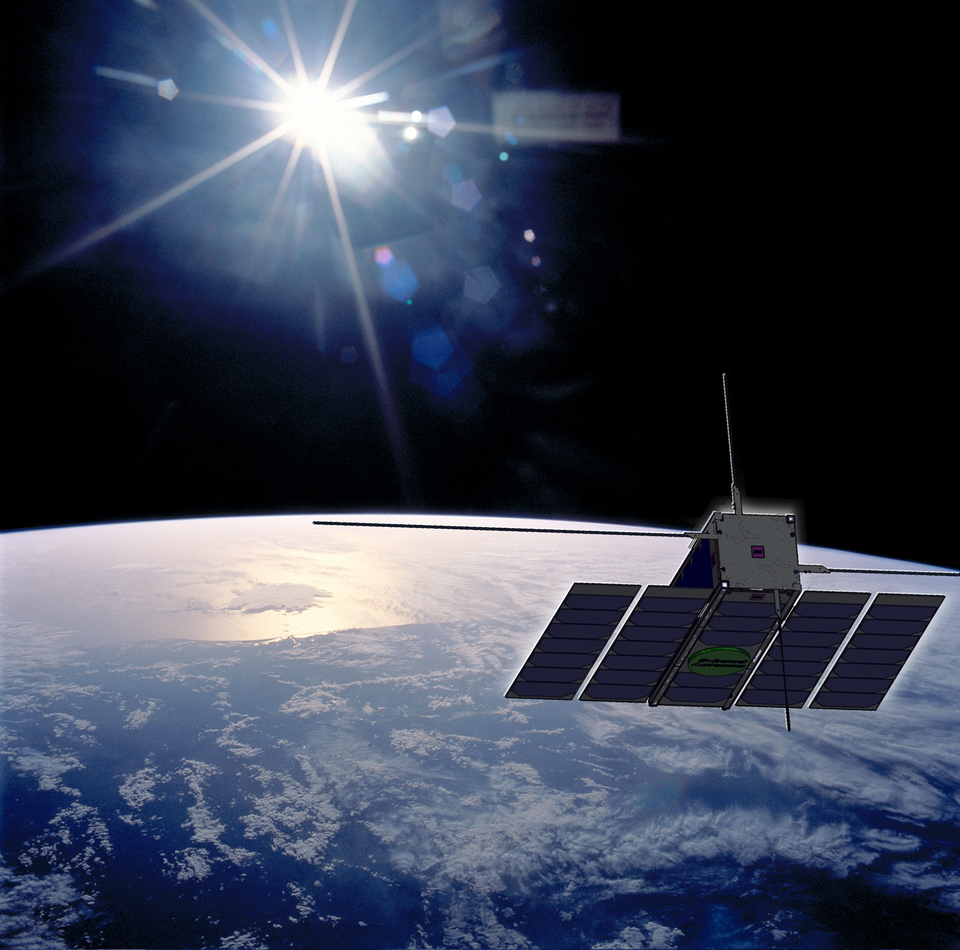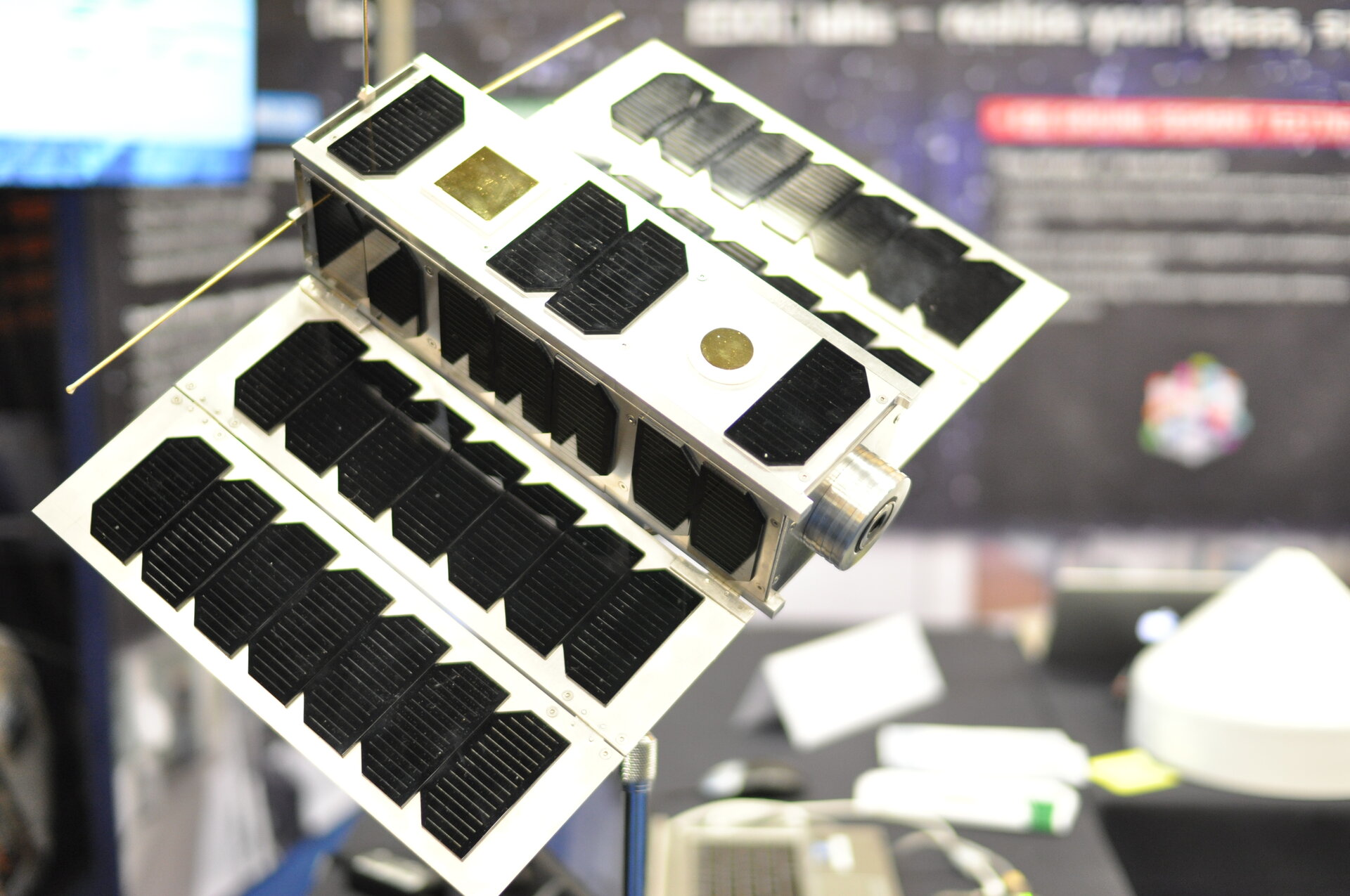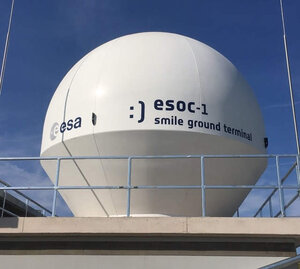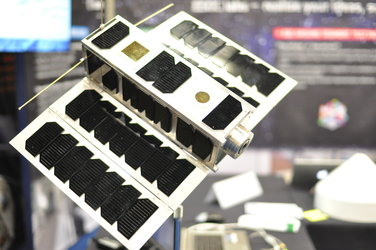Interplanetary internet & cameras in space: ESA’s OPS-SAT first results
OPS-SAT is the world’s first open, in-orbit testbed for new spacecraft software and applications. By conducting low-cost, low-risk experiments with OPS-SAT, teams from across Europe are ushering in a new era for European spaceflight innovation and commercial opportunity.
- OPS-SAT’s commissioning phase ended in September and the first experiments are now being carried out in orbit
- Innovative new technologies are being tested on OPS-SAT in areas such as artificial intelligence, data compression, and space-based web services
- Initial experimental results have exceeded expectations
- Results from many more experiments expected soon
Visionary software

One company in Spain, DAPCOM, is testing image-compression software using OPS-SAT’s camera system to greatly improve the image quality and scientific return of small Earth observation satellites.
Larger satellites, such as the Sentinels of the European Copernicus programme, use specialised hardware to ‘compress’ image data, reducing the data volume that is transmitted to Earth while maintaining a high image quality. But this hardware requires physical space on board and is not an option for tiny CubeSats or nanosats, which can be as small as just a few centimetres in size.

“The initial results from DAPCOM are incredible,” says ESA’s David Evans, OPS-SAT Project Manager. “We never expected to produce such fantastic images with OPS-SAT’s camera and DAPCOM’s innovation helps us to download many times more of them.”
DAPCOM’s software has now been made available to other OPS-SAT experimenters.
“This is one of OPS-SAT’s greatest strengths,” says Evans. “Successful technologies can be immediately incorporated into OPS-SAT’s operational toolbox and made available to others for their own experiments.”
Interplanetary internet from the home office
Another key feature of OPS-SAT is that ESA allows experimenters from across the European spaceflight community – industry, academia, start-ups, other agencies, clubs/schools – to remotely test-fly their software.
Dresden, Germany, start-up D3TN became the first to successfully operate their OPS-SAT experiment from home over the internet.
“As well as being the first time that OPS-SAT was controlled over the internet from an experimenter's home office, the D3TN experiment successfully tested a new communications technology called the ‘Ring Road’,” says Evans.
“This technology could allow for a type of interplanetary internet that links extremely low-cost, large-scale satellite networks spanning from Earth to the Moon, or even to Mars.”
The company’s OPS-SAT experiment marks the first time the ‘Ring Road’ has been tested in space.
Boosting European industry

Tanagra Space, founded by OPS-SAT flight control member Georges Labrèche, is a European based start-up focussed on developing accessible artificial intelligence (AI) solutions for the space industry.
During OPS-SAT’s commissioning phase, Labrèche faced challenges with the inconsistent pointing of OPS-SAT's camera system. He set out to save valuable communication bandwidth by ‘training’ a smart camera application powered by artificial intelligence to recognise poor or overexposed images and filter them out, preventing them from being transmitted back to Earth.
Almost 5000 images taken by OPS-SAT were used to train the system. The accuracy of its predictions proved so good that the software was soon left to work without ground team supervision.
"The software is so successful at distinguishing the good images from the bad, that it is now available to other OPS-SAT experimenters," says Evans. "They can easily improve on it by adding their own improvements to identify any images containing specific features they are looking for."
More results coming soon
In addition to DAPCOM and D3TN, many more experiments are currently taking place on board OPS-SAT, with results expected in the coming weeks and months:
- The French space agency, CNES, (France), are testing automatic spacecraft manoeuvre planning and collision prediction in space.
- Airbus (Germany) are using OPS-SAT to test a complete new on-board software system in the space environment.
- STAR-Dundee (UK) are testing a next-gen high-speed communication protocol called SpaceFibre using OPS-SAT’s powerful reconfigurable hardware.
- IRT Saint Exupéry (France) are using a form of artificial intelligence called ‘deep learning’ to recognise patterns such as cloud formations or fires on Earth.
- TU Graz (Austria) are attempting to monitor signals emitted by devices in the ‘Internet of Things’ from space using OPS-SAT’s software-defined radio and will also test optical communications using their laser ground station.
- VisionSpace (Germany) and the Artificial Intelligence and Operations Innovation team at ESA’s ESOC mission control centre are testing the use of artificial intelligence to allow a spacecraft to analyse images on board and schedule and plan activities autonomously.
- CGI (Estonia) and another team at ESOC are testing a new way of interfacing on-board and ground mission-scheduling processes (this will be a world first).


Access the video
There are dozens more OPS-SAT missions in the pipeline. New mission proposals are welcome!
If you have an innovative idea for the future of spaceflight, contact David Evans: david.evans@esa.int
OPS-SAT’s development and launch were covered by ESA’s General Support Technology Programme (GSTP). The spacecraft is operated by ESA’s ESOC mission control centre in Darmstadt, Germany.
Follow OPS-SAT on twitter at @esaoperations and the hashtag #OPSSAT














 Germany
Germany
 Austria
Austria
 Belgium
Belgium
 Denmark
Denmark
 Spain
Spain
 Estonia
Estonia
 Finland
Finland
 France
France
 Greece
Greece
 Hungary
Hungary
 Ireland
Ireland
 Italy
Italy
 Luxembourg
Luxembourg
 Norway
Norway
 The Netherlands
The Netherlands
 Poland
Poland
 Portugal
Portugal
 Czechia
Czechia
 Romania
Romania
 United Kingdom
United Kingdom
 Slovenia
Slovenia
 Sweden
Sweden
 Switzerland
Switzerland



































